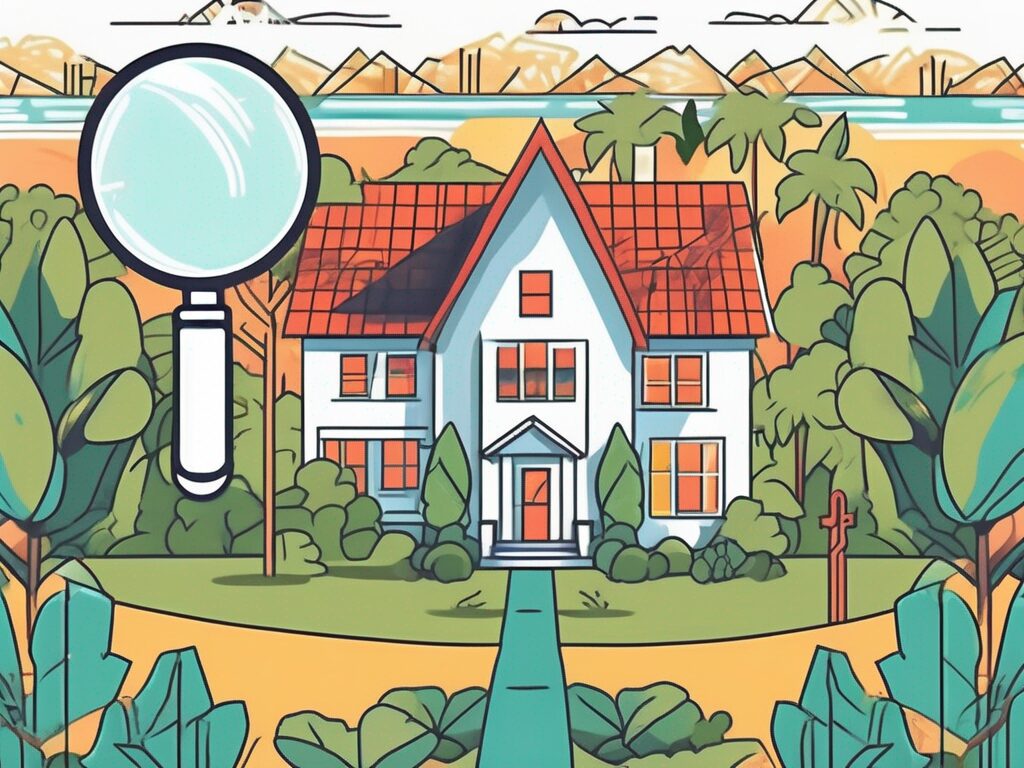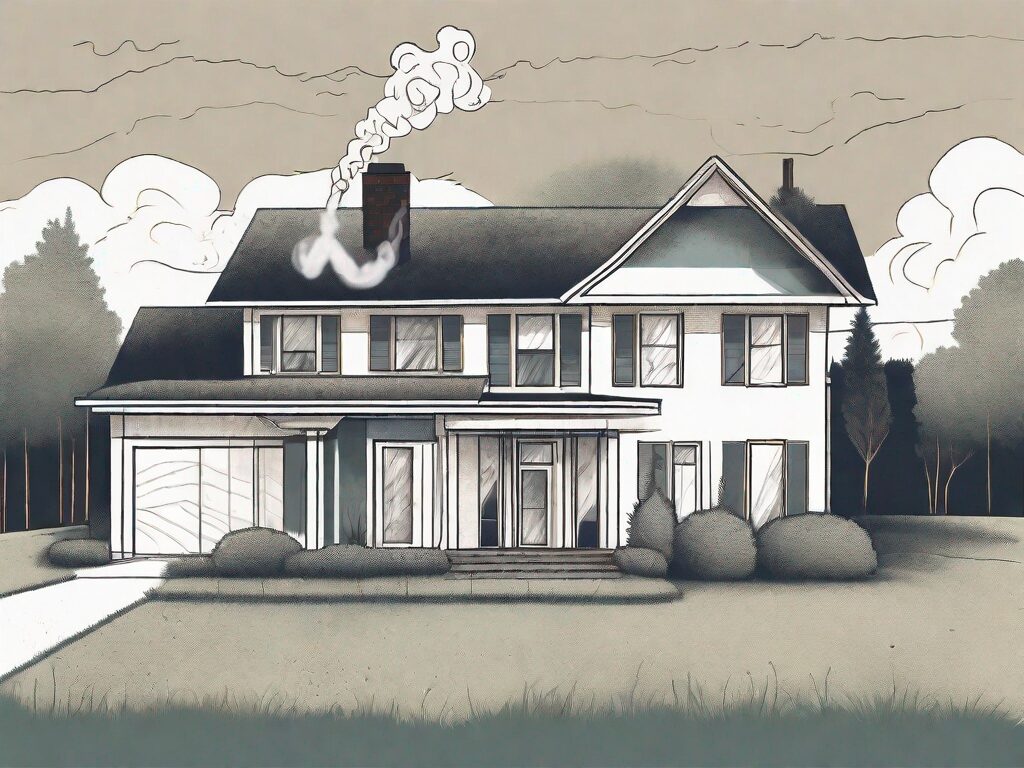
Agent A-Team or Solo Superhero? Finding the Right Real Estate Partner for Your Selling Journey in Wildwood Florida
When it comes to selling your home in Wildwood, Florida,…
January 29, 2024
Are you considering buying a smoker’s house? Before making a decision, it is crucial to understand the potential risks and challenges associated with living in a home that has been occupied by smokers. In this article, we will explore the hidden dangers of living in a smoker’s house, strategies for transforming it into a fresh living space, and how to prioritize your health in such an environment. Let’s delve into the details.
Living in a smoker’s house can expose you and your family to various health risks. One of the most significant concerns is thirdhand smoke, which refers to the residual tobacco smoke pollutants left on surfaces, furniture, and walls. The lingering effects of thirdhand smoke can contribute to long-term health issues, especially for young children and individuals with respiratory conditions.
When it comes to the dangers of living in a smoker’s house, it’s important to understand the insidious nature of thirdhand smoke. Even after visible smoke dissipates, toxic particles can settle on surfaces and remain for extended periods. These particles can reactivate and release harmful chemicals when exposed to heat or moisture. This means that even if you can’t see or smell the smoke, the potential health risks are still present.
Identifying thirdhand smoke residue is crucial when considering buying a smoker’s house. Look out for yellowish-brown stains on walls and ceilings, sticky residue on furniture and countertops, and a distinct, lingering odor. These signs indicate the presence of tobacco pollutants and may require intensive cleaning and renovation efforts to eliminate.
One of the biggest challenges when buying a smoker’s house is dealing with the lingering odors. Smoke particles can permeate the walls, carpets, and other porous materials, resulting in an unpleasant and persistent smell. This can be particularly problematic for individuals with allergies or sensitivities. To tackle this issue, it is essential to employ specialized cleaning methods, such as steam cleaning, deep carpet cleaning, and ozone treatment, to eliminate the odors effectively.
Another common issue in smoker’s homes is the presence of burn marks. Cigarette burns on carpets, furniture, and fixtures can not only be unsightly but also pose fire hazards. Addressing these burn marks may require professional restoration services or, in severe cases, replacement of damaged items. Make sure to thoroughly inspect the property to assess the extent of these damages before making a purchasing decision.
In addition to the physical health risks associated with living in a smoker’s house, it’s important to consider the social implications as well. The smell of smoke can be off-putting to guests and may even affect your ability to resell the property in the future. It’s crucial to weigh these factors carefully before committing to a smoker’s house.
Ultimately, living in a smoker’s house comes with its fair share of hidden dangers. From the lingering effects of thirdhand smoke to the challenges of dealing with odors and burn marks, it’s essential to be fully aware of the potential risks before making a decision. If you’re considering purchasing a smoker’s house, it’s advisable to consult with professionals who can assess the property’s condition and provide guidance on the necessary steps to mitigate these risks.
If you’ve decided to purchase a smoker’s house, don’t despair. With careful planning and effective strategies, it is possible to transform the space into a fresh and healthy living environment. Let’s explore some key considerations and techniques for renovation and deep cleaning.
When renovating a smoker’s house, focus on methods that will effectively remove tobacco pollutants. Start by identifying and sealing any areas where smoke can seep through, such as gaps around doors and windows. This will help prevent any future smoke infiltration and maintain a clean and fresh environment. Repaint walls and ceilings with high-quality, low-VOC (volatile organic compound) paint to eliminate any remaining odors and stains. The low-VOC paint is not only effective in covering up the smoke residue but also ensures that the air quality in the house remains healthy. Consider replacing carpets and other porous materials that may retain smoke residue. By removing these items, you can significantly reduce the lingering smell of smoke and improve the overall air quality in the house.
In some cases, the extent of smoke damage may necessitate a complete overhaul of the house. If the property has extensive burn marks or the structural integrity has been compromised due to long-term smoking, it might be more cost-effective and safer to start fresh. Consult with professionals, such as contractors and restoration specialists, to determine the best approach for your specific situation. They can assess the damage and provide expert advice on whether a complete overhaul is necessary or if targeted renovations will suffice.
Deep cleaning is a crucial step in restoring a smoker’s house. Thoroughly clean all surfaces, including walls, ceilings, and floors, with specialized smoke residue removers. These removers are specifically designed to break down and remove the stubborn smoke particles that have settled on various surfaces. Steam clean carpets and upholstery to remove trapped smoke particles that regular vacuuming may not be able to eliminate. Remember to clean or replace air filters, HVAC systems, and curtains as they can harbor tobacco pollutants. These systems and fabrics can accumulate smoke residue over time, leading to poor air quality. Regular, meticulous cleaning is vital to maintain a fresh and healthy environment.
If renovation is not feasible or necessary, refreshing the interior with a fresh coat of paint can work wonders in a smoker’s house. Opt for paint with odor-sealing properties to neutralize any remaining smoke odors. These paints contain special additives that help encapsulate and block the odor molecules, preventing them from being released into the air. Lighter colors can also help brighten up the space and make it feel more inviting. Consider painting the ceiling as well, as smoke can often accumulate there. By giving the walls and ceilings a fresh coat of paint, you can effectively cover up any remaining smoke stains and create a clean and visually appealing living space.
Living in a smoker’s house may have implications for your health and the health of your family members. Before finalizing the purchase, carefully consider the potential risks and weigh them against your personal circumstances. Here are some factors to keep in mind:
First and foremost, it is important to understand the impact of secondhand smoke on your health. Secondhand smoke contains over 7,000 chemicals, including at least 70 known to cause cancer. When you live in a smoker’s house, you are exposed to these harmful substances on a daily basis. This exposure can increase the risk of respiratory problems, heart disease, and even lung cancer.
Furthermore, the smell of smoke can permeate every surface of a smoker’s house. From the walls to the carpets, the odor can be difficult to eliminate completely. This can be particularly troublesome if you or your family members have allergies or sensitivities to strong smells. It may require extensive cleaning and renovations to remove the smoke smell entirely.
While smoker’s houses may come with challenges, they may also present opportunities for negotiation and potential cost savings. If you are willing to invest in thorough cleaning and renovations, you can turn a smoker’s house into a safe and comfortable home. By replacing carpets, repainting walls, and deep cleaning all surfaces, you can significantly reduce the presence of tobacco pollutants.
However, if you or your family members have respiratory conditions or are particularly sensitive to tobacco pollutants, it may be best to avoid purchasing a smoker’s house altogether. The health risks associated with living in a smoker’s house can be especially detrimental for individuals with asthma, chronic bronchitis, or other respiratory illnesses. It is crucial to prioritize your health and consider the long-term implications before making a decision.
When considering whether to buy a smoker’s house, it is important to weigh the pros and cons. On one hand, purchasing a smoker’s house may offer a more affordable option compared to non-smoker homes in the same area. Smoker’s houses often have lower market values due to the potential health risks and the need for extensive cleaning and renovations. This could present an opportunity for cost savings and potentially negotiating a lower purchase price.
On the other hand, the health risks associated with living in a smoker’s house cannot be ignored. If you or your family members have pre-existing health conditions, the exposure to secondhand smoke can exacerbate these issues. It is crucial to consider the long-term health implications and the potential costs of remediation before making a decision.
In conclusion, buying a smoker’s house requires careful consideration of the potential risks and necessary steps for transformation. By understanding the hidden dangers of living in a smoker’s house, implementing effective renovation strategies, and prioritizing your health, you can navigate the challenges and create a fresh living space for you and your loved ones. Make an informed decision to ensure your future home supports your well-being and contributes to a healthy lifestyle.

If you want the Richr team to help you save thousands on your home just book a call.
 Book a call
Book a call